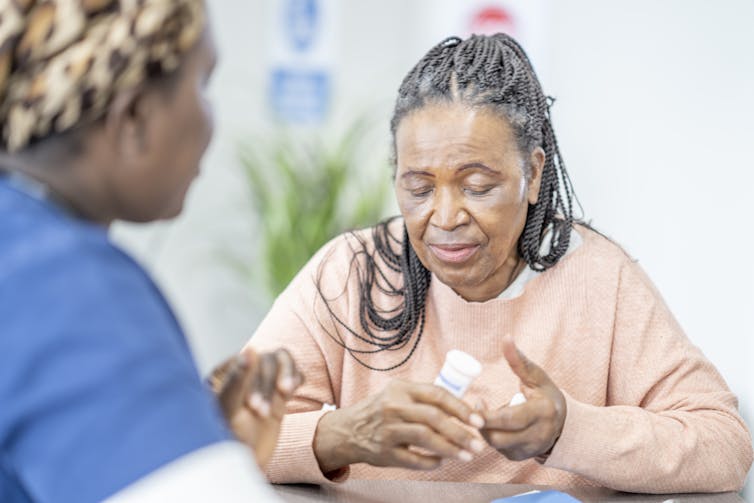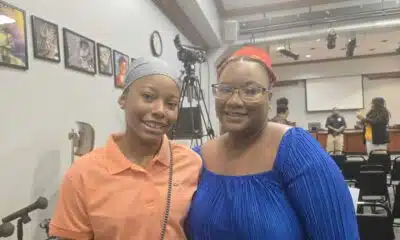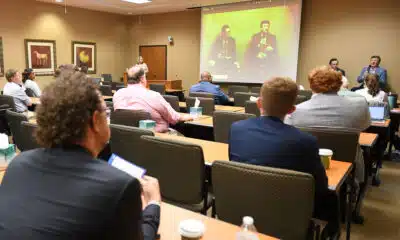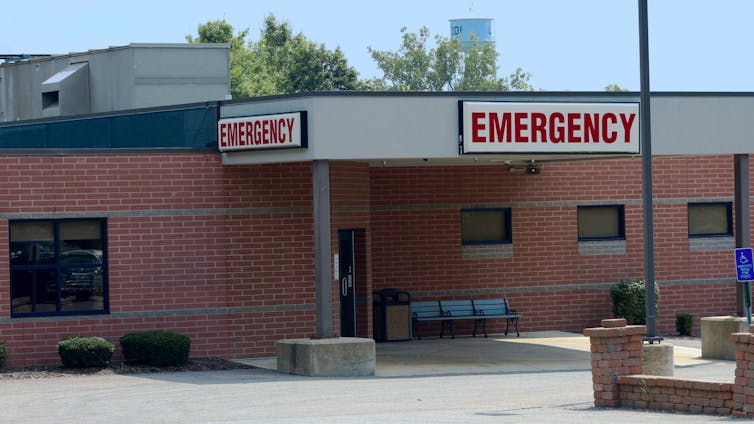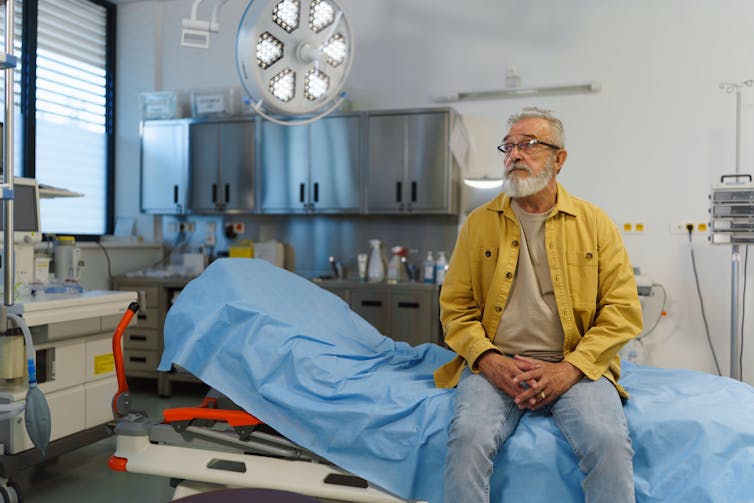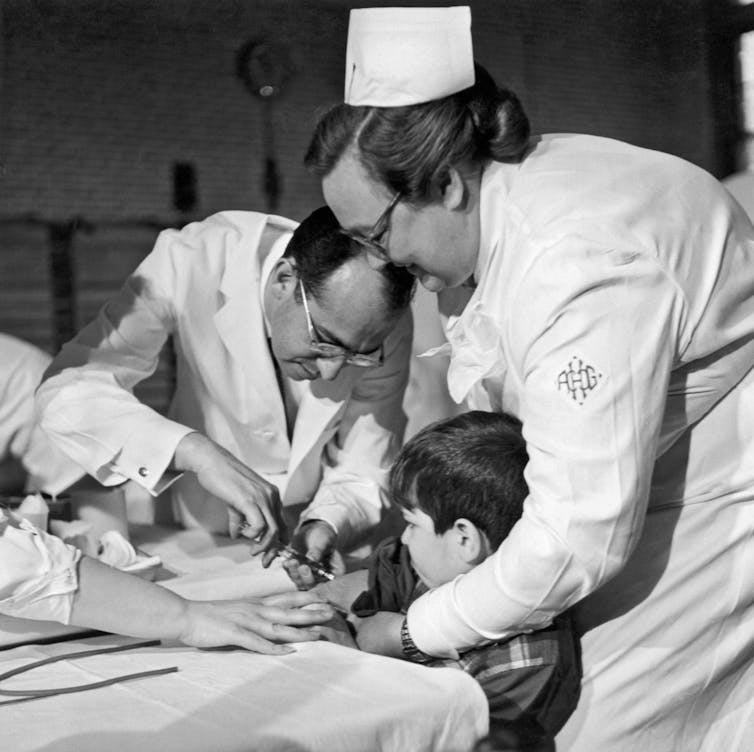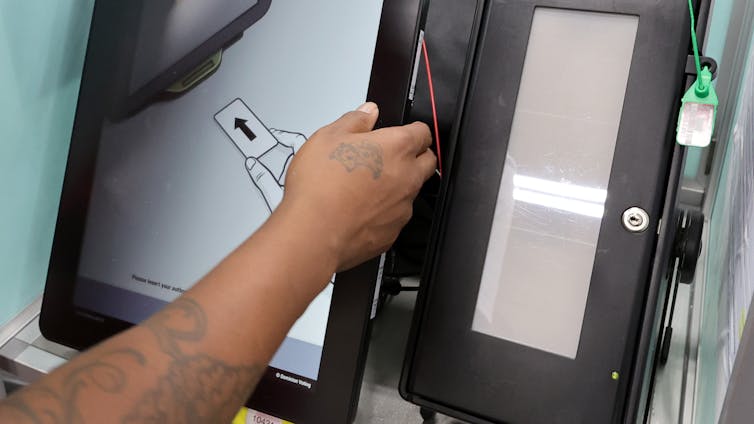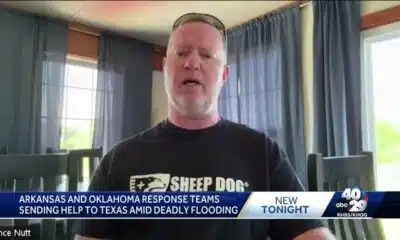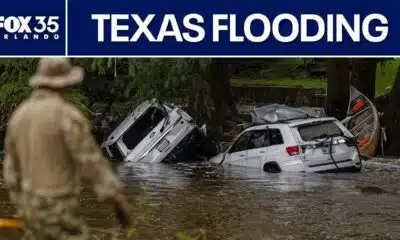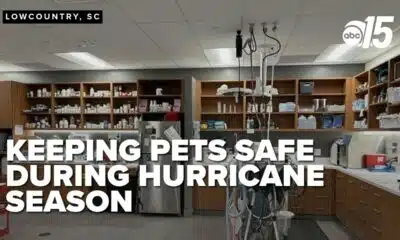If your mental image of a scientist looks like this, you’re due for an update.
Soazig Le Bihan, University of Montana
A man in a lab coat bends under a dim light, his strained eyes riveted onto a microscope. He’s powered only by caffeine and anticipation.
This solitary scientist will stay on task until he unveils the truth about the cause of the dangerous disease quickly spreading through his vulnerable city. Time is short, the stakes are high, and only he can save everyone. …
That kind of romanticized picture of science was standard for a long time. But it’s as far from actual scientific practice as a movie’s choreographed martial arts battle is from a real fistfight.
For most of the 20th century, philosophers of science like me maintained somewhat idealistic claims about what good science looks like. Over the past few decades, however, many of us have revised our views to better mirror actual scientific practice.
An update on what to expect from actual science is overdue. I often worry that when the public holds science to unrealistic standards, any scientific claim failing to live up to them arouses suspicion. While public trust is globally strong and has been for decades, it has been eroding. In November 2023, Americans’ trust in scientists was 14 points lower than it had been just prior to the COVID-19 pandemic, with its flurry of confusing and sometimes contradictory science-related messages.
When people’s expectations are not met about how science works, they may blame scientists. But modifying our expectations might be more useful. Here are three updates I think can help people better understand how science actually works. Hopefully, a better understanding of actual scientific practice will also shore up people’s trust in the process.
The many faces of scientific research
First, science is a complex endeavor involving multiple goals and associated activities.
Some scientists search for the causes underlying some observable effect, such as a decimated pine forest or the Earth’s global surface temperature increase.
Others may investigate the what rather than the why of things. For example, ecologists build models to estimate gray wolf abundance in Montana. Spotting predators is incredibly challenging. Counting all of them is impractical. Abundance models are neither complete nor 100% accurate – they offer estimates deemed good enough to set harvesting quotas. Perfect scientific models are just not in the cards.
It can be tough enough to find treatments that mitigate symptoms, let alone gain a complete understanding of a disorder.
Beyond the what and the why, scientists may focus on the how. For instance, the lives of people living with chronic illnesses can be improved by research on strategies for managing disease – to mitigate symptoms and improve function, even if the true causes of their disorders largely elude current medicine.
It’s understandable that some patients may grow frustrated or distrustful of medical providers unable to give clear answers about what causes their ailment. But it’s important to grasp that lots of scientific research focuses on how to effectively intervene in the world to reach some specific goals.
Simplistic views represent science as solely focused on providing causal explanations for the various phenomena we observe in this world. The truth is that scientists tackle all kinds of problems, which are best solved using different strategies and approaches and only sometimes involve full-fledged explanations.
Complex problems call for complex solutions
The second aspect of scientific practice worth underscoring is that, because scientists tackle complex problems, they don’t typically offer one unique, complete and perfect answer. Instead they consider multiple, partial and possibly conflicting solutions.
Scientific modeling strategies illustrate this point well. Scientific models typically are partial, simplified and sometimes deliberately unrealistic representations of a system of interest. Models can be physical, conceptual or mathematical. The critical point is that they represent target systems in ways that are useful in particular contexts of inquiry. Interestingly, considering multiple possible models is often the best strategy to tackle complex problems.
Scientists consider multiple models of biodiversity, atomic nuclei or climate change. Returning to wolf abundance estimates, multiple models can also fit the bill. Such models rely on various types of data, including acoustic surveys of wolf howls, genetic methods that use fecal samples from wolves, wolf sightings and photographic evidence, aerial surveys, snow track surveys and more.
Weighing the pros and cons of various possible solutions to the problem of interest is part and parcel of the scientific process. Interestingly, in some cases, using multiple conflicting models allows for better predictions than trying to unify all the models into one.
The public may be surprised and possibly suspicious when scientists push forward multiple models that rely on conflicting assumptions and make different predictions. People often think “real science” should provide definite, complete and foolproof answers to their questions. But given various limitations and the world’s complexity, keeping multiple perspectives in play is most often the best way for scientists to reach their goals and solve the problems at hand.
Researchers present their work publicly at conferences and in journals so other scientists can learn from and critique it.
Science as a collective, contrarian endeavor
Finally, science is a collective endeavor, where healthy disagreement is a feature, not a bug.
The romanticized version of science pictures scientists working in isolation and establishing absolute truths. Instead, science is a social and contrarian process in which the community’s scrutiny ensures we have the best available knowledge. “Best available” does not mean “definitive,” but the best we have until we find out how to improve it. Science almost always allows for disagreements among experts.
Controversies are core to how science works at its best and are as old as Western science itself. In the 1600s, Descartes and Leibniz fought over how to best characterize the laws of dynamics and the nature of motion.
The long history of atomism provides a valuable perspective on how science is an intricate and winding process rather than a fast-delivery system of results set in stone. As Jean Baptiste Perrin conducted his 1908 experiments that seemingly settled all discussion regarding the existence of atoms and molecules, the questions of the atom’s properties were about to become the topic of decades of controversies with the birth of quantum physics.
The nature and structure of fundamental particles and associated fields have been the subject of scientific research for more than a century. Lively academic discussions abound concerning the difficult interpretation of quantum mechanics, the challenging unification of quantum physics and relativity, and the existence of the Higgs boson, among others.
Distrusting researchers for having healthy scientific disagreements is largely misguided.
A very human practice
To be clear, science is dysfunctional in some respects and contexts. Current institutions have incentives for counterproductive practices, including maximizing publication numbers. Like any human endeavor, science includes people with bad intent, including some trying to discredit legitimate scientific research. Finally, science is sometimes inappropriately influenced by various values in problematic ways.
These are all important considerations when evaluating the trustworthiness of particular scientific claims and recommendations. However, it is unfair, sometimes dangerous, to mistrust science for doing what it does at its best. Science is a multifaceted endeavor focused on solving complex problems that typically just don’t have simple solutions. Communities of experts scrutinize those solutions in hopes of providing the best available approach to tackling the problems of interest.
Science is also a fallible and collective process. Ignoring the realities of that process and holding science up to unrealistic standards may result in the public calling science out and losing trust in its reliability for the wrong reasons.
Soazig Le Bihan, Professor of Philosophy, University of Montana
This article is republished from The Conversation under a Creative Commons license. Read the original article.

